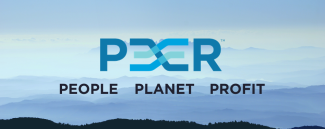Operational excellence is something which every industry aims for. And by incorporating sustainability and efficiency into services and operations, industries have a much better chance at achieving that goal. Operational efficiency takes into account the full lifecycle of a project, shifting the focus from a single point in time to a cost-effective mix of preventative, predictive and reliability-centered maintenance technologies.
While we traditionally only account for electrical equipment in the original design and construction phases, it must be operated and maintained responsibly in order to continue functioning at desired levels of efficiency. The performance gaps of this type of equipment can be assessed with the Plan-Do-Check-Act (PDCA) or Deming Cycle, which provides a continual improvement process in quantifying the value of a sustainable electric system.
Not only does thoughtful maintenance lead to significant energy savings, it also improves personnel safety and morale, and directly impacts the triple bottom line.
Buildings, communities, cities and transit systems have the same overarching goals: to improve operational efficiency, reduce financial waste and increase productivity. By leveraging technology and rating systems, projects of all size can achieve these goals.
PEER rating system’s third credit category, Operations, Management and Safety (OP), ensures that any project’s power system is built and operated safely. It provides projects with strategies on how to:
- Leverage the triple bottom line analysis,
- Eliminate financial waste,
- Improve safety & operations,
- Mitigate risks, and
- Invest on modern technologies.
The Operations, Management and Safety Credit Category in Action
Delhi Metro Rail Corporation (DMRC), the first transit project in the world to achieve PEER certification, has been a leader in the implementation of sustainable energy infrastructure. By 2020, they had achieved PEER Gold certification for two separate metro lines.
DMRC operates an urban rail-based mass rapid transit system on nine lines in the Delhi-NCR region of India, serving an average of 4.7 million passengers per day. Their vision of a customer- and community-focused commuting experience drives DMRC to put the convenience and needs of their customers first, while reducing their carbon footprint on the local environment. To support this, DMRC has a huge energy infrastructure spread across 389 kilometers and 285 stations as of 2020.
Naturally, the most important aspect of a public transit system is its reliable operation. Through PEER certification, DMRC began implementing continual improvement and failure reduction measures through the Operational Processes credit.
With guidance from PEER’s Risk Assessment and Mitigation credit, DMRC was able to develop a strategy to prevent both transformer and OHE (Overhead Equipment) failures. A new protection scheme based on a relay logic was developed to protect their traction transformer from fault currents and this resulted in a cost saving of $16,500 (INR 1.2 million) per line, per year for the project.

DMRC issued their maintenance team with Standard Maintenance Instructions (SMI) which created a uniform procedure that optimized maintenance and manpower. This also universalized staff knowledge of the system, which had previously been limited to their individual metro lines.
Through PEER’s Triple Bottom Line Analysis credit, DMRC was able to evaluate not only the economic benefit, but also the environmental and social benefits of these new measures. The improved Cantilever maintenance system helped DMRC achieve a cost savings of $19,000 (INR 1.4 million) in savings per line, per year, and saved 78 man-hours per line, per month.
Overall, including the loss of revenue ($15,000/INR 1.1 million) from system failures, DMRC was able to save $50,000 (INR 3.7 million) per line, per year through these effective operation and maintenance procedures.
In addition, DMRC research indicates that up to 170 kg of CO2 are reduced each day as passengers make the decision to use reliable public transportation instead of private vehicles. An estimated one million passengers use the DMRC each day. By improving the system’s resilience, DMRC dramatically improves their environmental footprint and strengthens their triple bottom line goals.

PEER provided DMRC with an opportunity to assess the effectiveness of their work to date, identify areas for improvement and set a global standard for transit systems across the world.
In the same way, other transit projects, campuses (universities, airports, manufacturing units, etc.), and cities & utilities can assess their triple bottom line benefits through PEER certification. This is the fourth article on the series that introduces PEER’s credit categories. Stay tuned as we explore how the next category, Grid Services, can benefit your triple bottom line.
